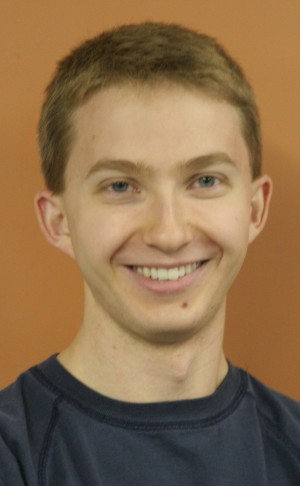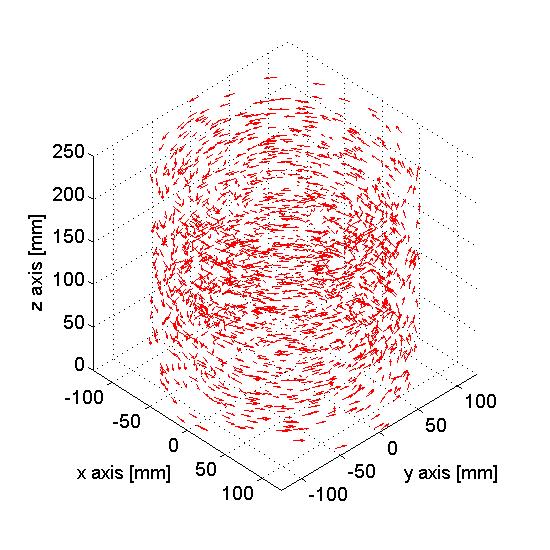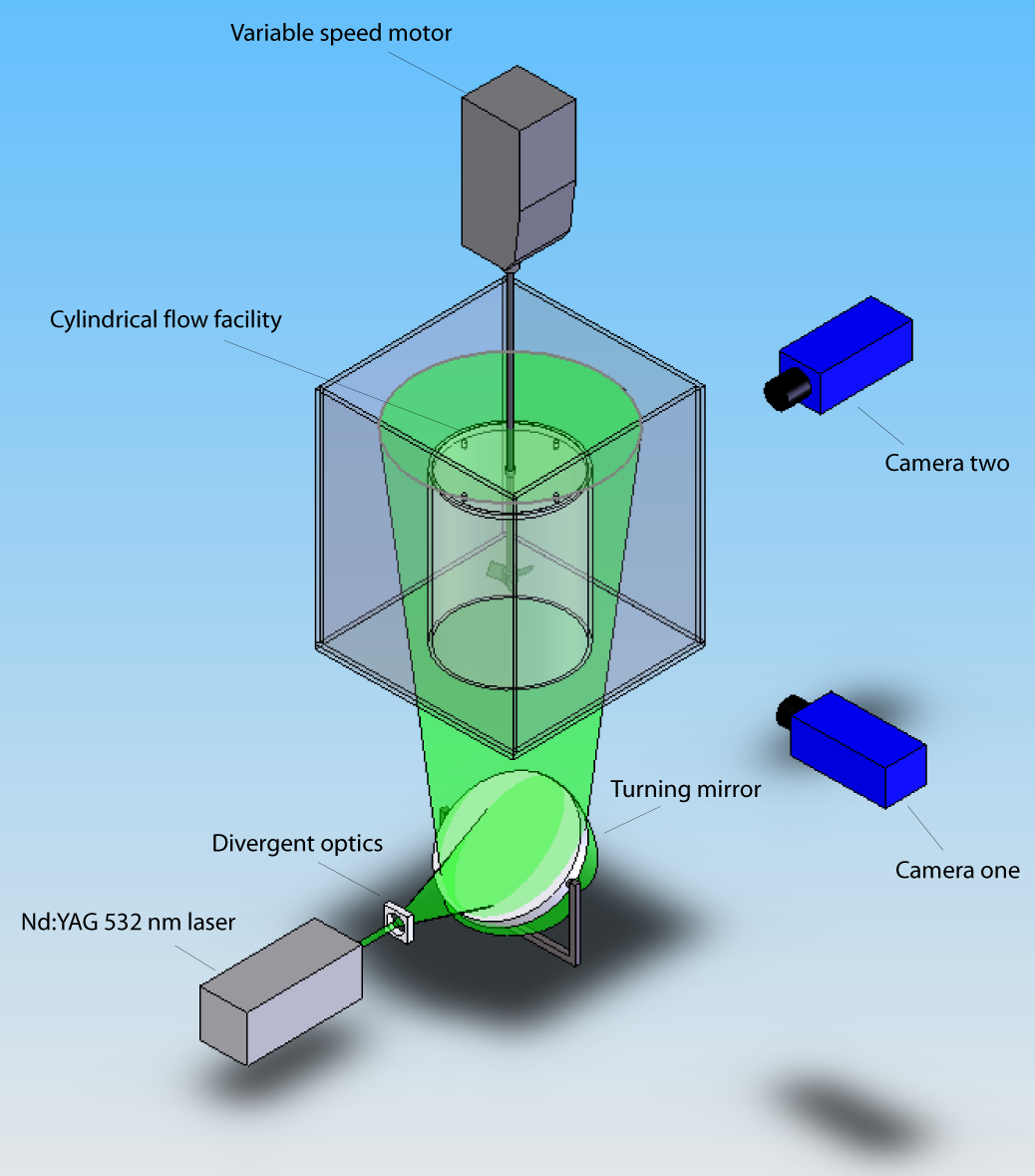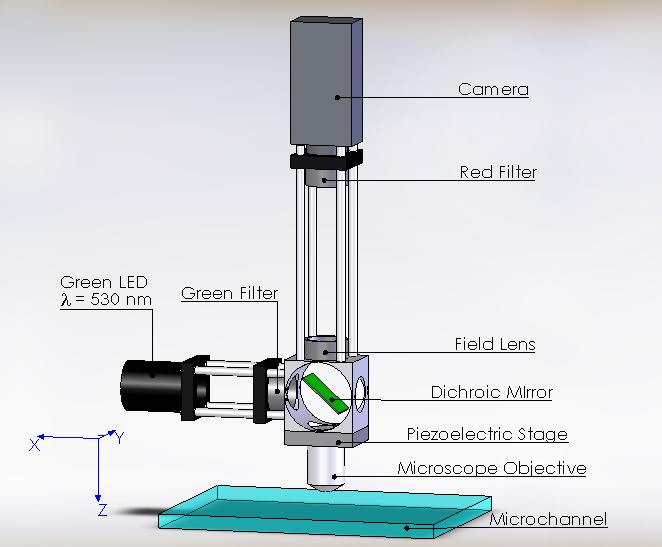PDFs & Technicians Graduates Undergraduates Past Students
Darren Homeniuk

B.Sc. Elec. Eng. : University of Alberta (2006)
M.Sc. Mech. Eng. : University of Alberta (2009)
Supervisors
Dr. David S. Nobes
The aim of my thesis is to develop three-dimensional measurement systems able to describe the motion of fluids. This aim is achieved by following small particles through the fluid (tracer particles), which are assumed to follow the fluid's motion. Find the particle motion, and you have the fluid motion as well.
To determine the particle motion, I use an imaging technique called "particle tracking". Cameras are used to capture particle motion, and the images are processed to determine 3D particle motion (and hence fluid motion), particle by particle.

This figure shows displacement vectors from simulation of a solid-body rotational flow. The simulation allowed me to take multiple images of a flow field I defined, and these images were fed into my algorithm.

Multiple camera flow facility

Schematic of the single camera flow facility
3-D Particle Tracking
Particle tracking consists of three main steps:
Particle Identification - finding particles in 2D images
Three-dimensional Reconstruction - locating particles in 3D space
Particle Tracking - following particles through time and 3D space.
First, I tested my processing algorithm via a simulation. This is a great way to test my algorithm, because there is no noise, non-spherical particles, or other real-world effects in the images that can really mess things up. I know where particles are in 3D space, and can compare the known and found position sets.
I have two systems that act according to the general particle tracking method:
SYSTEM 1: Multiple Camera System
- This system uses two cameras to view LARGE-SCALE fluid motion. Measurement is on a scale between millimeters and meters, and can scale up to be large, as long as particles are visible to all cameras.
- Each camera takes an image of the tracer particles at the same time
- Particle identification finds all particles in all images.
- Reconstruction finds the 3D positions of viewed particles from the 2D image information.
- Particle tracking finds trajectories of particles.
SYSTEM 2: Single Camera System
- This system uses a single camera to view SMALL-SCALE fluid motion. Measurement is on the scale of micrometers (width of a human hair).
- We want to measure fluid motion over three dimensions on this scale for a new micro-filtering application.
- Particle tracking and particle identification are exactly the same between the systems.
- The method of reconstruction differs, and is hardware-related.